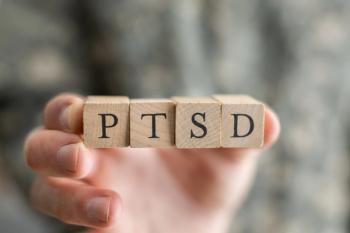
PTSD, DSM-5, and Forensic Misuse
In preparing DSM-IV, we worked hard to avoid causing confusion in forensic settings. Realizing that lawyers read documents in their own special way, we had a panel of forensic psychiatrists go over every word to reduce the risks that DSM IV could be misused in the courts.
In preparing DSM-IV, we worked hard to avoid causing confusion in forensic settings. Realizing that lawyers read documents in their own special way, we had a panel of forensic psychiatrists go over every word to reduce the risks that DSM IV could be misused in the courts. They did an excellent job, but all of us missed one seemingly small mistake-the substitution of an “or” for an “and” in the paraphilia section that lead to serious misunderstandings and the questionably constitutional preventive psychiatric detention of sexual offenders.
DSM-5 is about to make a very different, less crucial, but still consequential forensic mistake. The proposed A criterion for PTSD includes the following wording:
A. The person was exposed to one or more of the following event(s): death or threatened death, actual or threatened serious injury, or actual or threatened sexual violation, in one or more of the following ways:
•Experiencing the event(s) him/herself
•Witnessing, in person, the event(s) as they occurred to others
•Learning that the event(s) occurred to a close relative or close friend; in such cases, the actual or threatened death must have been violent or accidental.
The third way opens the gates for forensic abuse. The motivation for including this phrase is surely well meaning. There may certainly be individuals whose PTSD is triggered by indirectly learning about, not necessarily being directly confronted with, the violent loss of or harm to a loved one. On clinical grounds alone it may be useful to have a more inclusive definition of the acceptable stressors to alert clinicians and patients to this possibility. But inclusive definitions inserted for clinical purposes can create great complications in the courtroom.
PTSD is probably one of the most underdiagnosed and also one of the most overdiagnosed of DSM disorders. Many individuals with true PTSD deny and hide their symptoms-either because they are trying to avoid all reference to the horrible triggering event or because they have stoical personalities, or both. At the opposite pole, others may exaggerate or feign PTSD symptoms because these often bring disability or damages compensation. Because the symptoms of PTSD are entirely subjective (there is no way independent of patient report to rule the diagnosis in or out), the major limitation to the misuse of the PTSD diagnosis is currently the requirement that the triggering stressor be extreme and that the individual have experienced direct personal contact with it.
The suggested DSM-5 wording will invite forensic misuse. PTSD is already a common claim in attempting to establish damages in civil lawsuits. While this is often entirely appropriate, the potential secondary gain inherent in the forensic setting invites the feigning of symptoms or their exaggeration. Lawsuits that now claim psychiatric damages only for those who have had some direct contact with the stressor could now include as PTSD victims the entire family and circle of friends who are pained by the traumatic event. Their distress and grief certainly deserves every respect, but it is not wise to encourage such easily abused inflation of the forensic use of the PTSD diagnosis.
Newsletter
Receive trusted psychiatric news, expert analysis, and clinical insights — subscribe today to support your practice and your patients.




